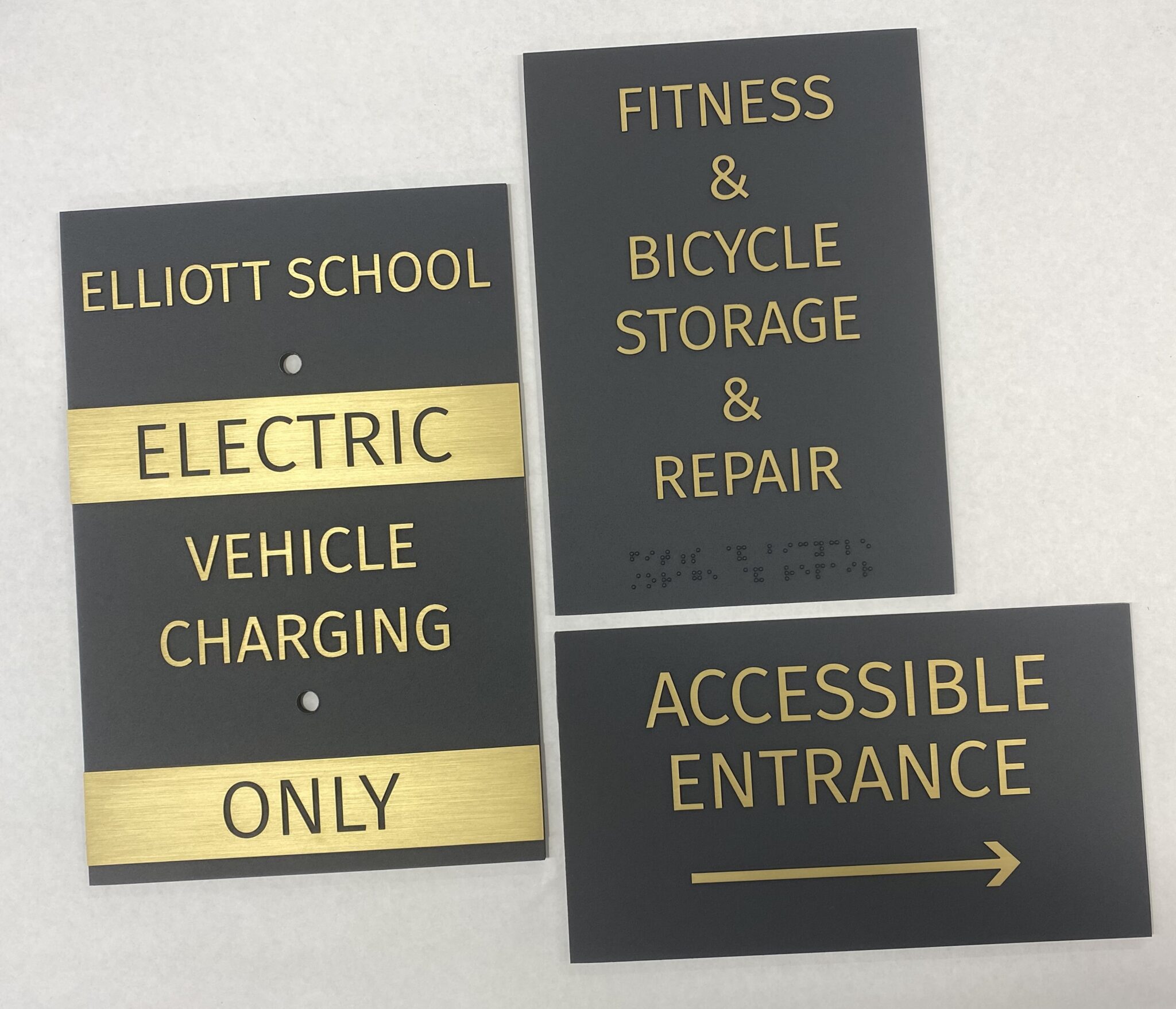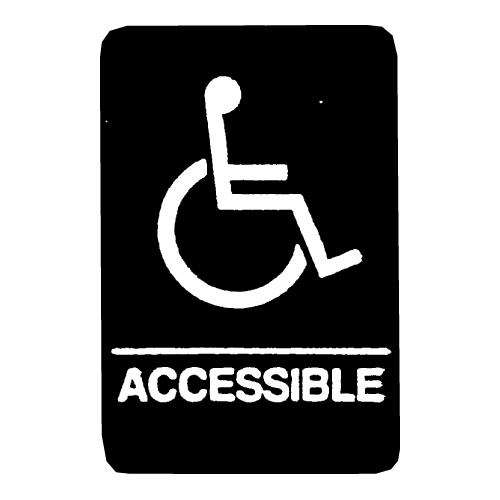ADA Signs: Ensuring Availability and Compliance in Public Spaces
ADA signage plays an indispensable role in ensuring ease of access and compliance within public areas, dramatically contributing to an inclusive environment for individuals with impairments. As we explore the nuances of ADA signs, from tactile features to develop ins and outs, it's vital to take into consideration exactly how these elements integrate to support the legal rights of all individuals.
Significance of ADA Signage
In contemporary culture, the significance of ADA signs expands past simple compliance with lawful mandates to personify a commitment to inclusivity and accessibility for all individuals. These signs are necessary in developing atmospheres where people with specials needs can navigate public spaces with the very same ease and independence as those without specials needs. By offering clear and standardized info, ADA signage ensures that everyone can access centers, services, and details without obstacles.
The significance of ADA signs depends on its capacity to boost the lifestyle for individuals with specials needs by promoting equal access. It removes the challenges that might or else hinder their capacity to get involved fully in area life. Additionally, these indicators serve as noticeable signs of a company's dedication to variety and equality, showing broader social worths that promote the rights and self-respect of all individuals.
In addition, ADA signs plays an important duty in public security. By guiding people to leaves, washrooms, and other essential facilities, it makes sure that all individuals, regardless of physical capability, can leave safely throughout emergency situations. In summary, ADA signage is not just a governing need yet a powerful device for cultivating a inclusive and equitable society.
Key Components of Compliance

Placement is essential; signs should be set up in locations that are easily visible and obtainable. Generally, signage should be placed in between 48 and 60 inches from the ground to make sure access for both standing and wheelchair individuals. Responsive components, such as Braille, are vital for individuals with visual impairments, providing essential details in a non-visual layout.
High-contrast shades between the text and history are needed to improve readability for individuals with reduced vision. The ADA mandates specific contrast ratios to guarantee clarity. In addition, personality dimension is a crucial consideration, with minimal elevation requirements determined by the checking out distance to guarantee readability from numerous angles.
Style Considerations for Availability
Creating available signs calls for a precise technique to guarantee it satisfies the demands of all users, especially those with handicaps. The size of the text is similarly essential, with ADA standards recommending a minimum height based on checking out range to make certain legibility.
Contrasting shades between message and history are important for visibility, particularly for individuals with aesthetic impairments. Additionally, tactile components, such as Braille and elevated personalities, are crucial for individuals who are blind or have low vision.
Additionally, the placement of signs plays a substantial function in availability. Indications ought to be installed in locations that are easily obtainable and unblocked. Making sure that signage is placed at ideal heights and angles enables all customers, consisting of those using wheelchairs, to interact with them properly.
Typical Mistakes to Stay Clear Of

One more prevalent error is the wrong placement of signs. ADA guidelines define precise elevation and place requirements to ensure that indicators are obtainable and quickly visible by all people, including those utilizing mobility devices. Overlooking these standards not only hinders access but likewise risks non-compliance with lawful standards.
In addition, insufficient contrast in between message and background is a regular oversight. Appropriate comparison is essential for readability, especially for people with reduced vision. Designers in some cases pick colors that are aesthetically enticing but lack the needed comparison, providing the message challenging to recognize.
Last but not least, some designers fail to integrate responsive aspects, such as Braille, which are crucial for people that are blind. Leaving out these attributes not only causes non-compliance with ADA laws however likewise limits accessibility for a sector of the populace that relies on tactile information.
Future Trends in Signage
Innovations in modern technology and boosting recognition of inclusivity are forming the future fads in signs layout. As society comes to be much more conscious of diverse needs, the integration of smart technologies right into signs is getting traction. Digital signage, as an example, is developing to include interactive attributes and real-time updates, which can be crucial in providing vibrant details in public rooms. These indications typically integrate touch displays or gesture-based controls, making it possible for customers to browse content tailored to their specific needs.
One more emerging pattern is the use of enhanced reality (AR) to boost user experience. AR-enabled signs can overlay digital info onto the physical environment, supplying aesthetically impaired people with auditory or haptic feedback. ADA Signs. This innovation not just improves access however additionally produces an engaging experience for all individuals
Sustainability is additionally a significant aspect influencing signage patterns. Environmentally friendly materials and energy-efficient illumination remedies official website are being prioritized to line up with international ecological goals. Additionally, advancements in products scientific research are resulting page in the advancement of even more durable and weather-resistant indications.
Conclusion
ADA signage plays a crucial duty in ensuring accessibility and conformity within public rooms by incorporating responsive elements, high-contrast colors, and critical positioning. The adherence to ADA criteria not just assists in secure navigating for people with handicaps yet likewise signifies an organization's dedication to diversity and inclusivity. By preventing typical errors and accepting future patterns, public spaces can proceed to progress these values, making certain that the civil liberties and self-respect of all people are appreciated and promoted.
ADA signage plays a crucial function in assuring accessibility and conformity within public rooms, dramatically contributing to an inclusive setting for people with specials needs. As we check out the nuances of ADA signage, from tactile attributes to make details, it's critical to consider just how these aspects coalesce to maintain the legal rights of all users.In modern-day society, the importance of ADA signs prolongs beyond plain conformity with legal requireds to embody a commitment to inclusivity and access for all people. By providing standard and clear info, ADA signage ensures that every person can access facilities, solutions, and info without obstacles.
ADA signs plays a crucial role in assuring ease of access and compliance within public rooms by incorporating responsive aspects, high-contrast colors, and check my blog calculated placement. (ADA Signs)